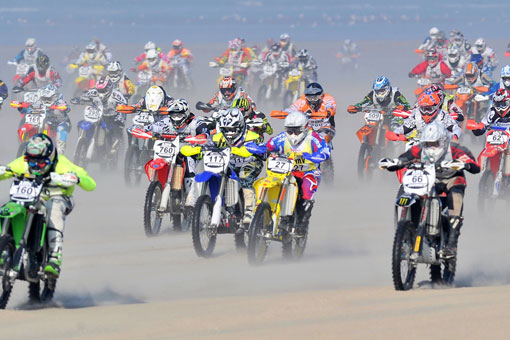In 1977, while in a race, French motorcyclist Thierry Sabine got lost in the Sahara Desert and turned up in Libya. Struck by the adventure and challenges of his errant path, Sabine founded The Paris-Dakar Rally off-road race a year later. And while the popular event is now known simply as “The Dakar,” in recent years it has actually been held not in the extreme conditions of the African desert, but in South America.
The race is organized by the French firm Amaury Sport Organisation (ASO)—the same group that manages the Tour de France and the Paris Marathon. First staged in 1979 from Paris, France to Dakar, Senegal, The Dakar puts drivers behind the wheels of three classes of vehicles—motorcycles, cars and trucks—to brave extreme temperatures and brutal off-road terrain across more than 5,600 miles (9,000 kilometers) in 14 racing stages, with a break after the seventh stage. But when security concerns in Mauritania forced the race’s cancellation in 2008, South American neighbors Chile and Argentina stepped in, offering to host the following year. ASO accepted their proposal, with race director Etienne Lavigne citing Argentina’s Las Pampas grasslands, Chile’s Atacama Desert and the Andes Mountains as “daunting obstacles.”
Success in 2009 led the ASO to stick with South America in 2010 and 2011, starting and ending the race each year in Buenos Aires, but with different halfway points in Chile. The recently announced 2012 route will add Peru’s challenging geography to the course. Racers will begin in Mar del Plata, Argentina, on January 1 and race for seven stages before a rest day in Copiapó, Chile. The race will finish in Lima, Peru, in mid-January.
Broadcasts of the rally reach more than 190 countries annually. For host countries, the economic benefits have been significant. Argentine Minister of Tourism Enrique Meyer declared in 2009 that The Dakar “has been the biggest promotional tool for tourism in Argentina’s history.” A 2010 Argentine government study put the estimated annual benefit at about $170 million, including everything from sponsorship to tourism.
While organizers pledge to someday return The Dakar to its Euro-African roots, they are committed to South America for the near future. Just this year, in April, Dakar organizers announced that the 2013 race will finish in Chile.






